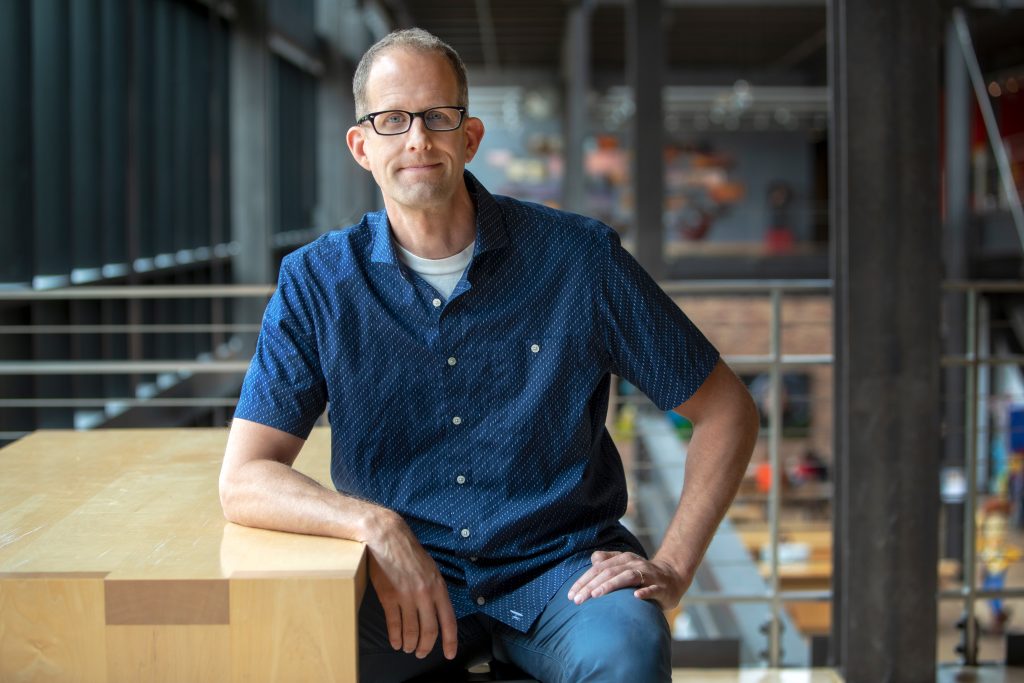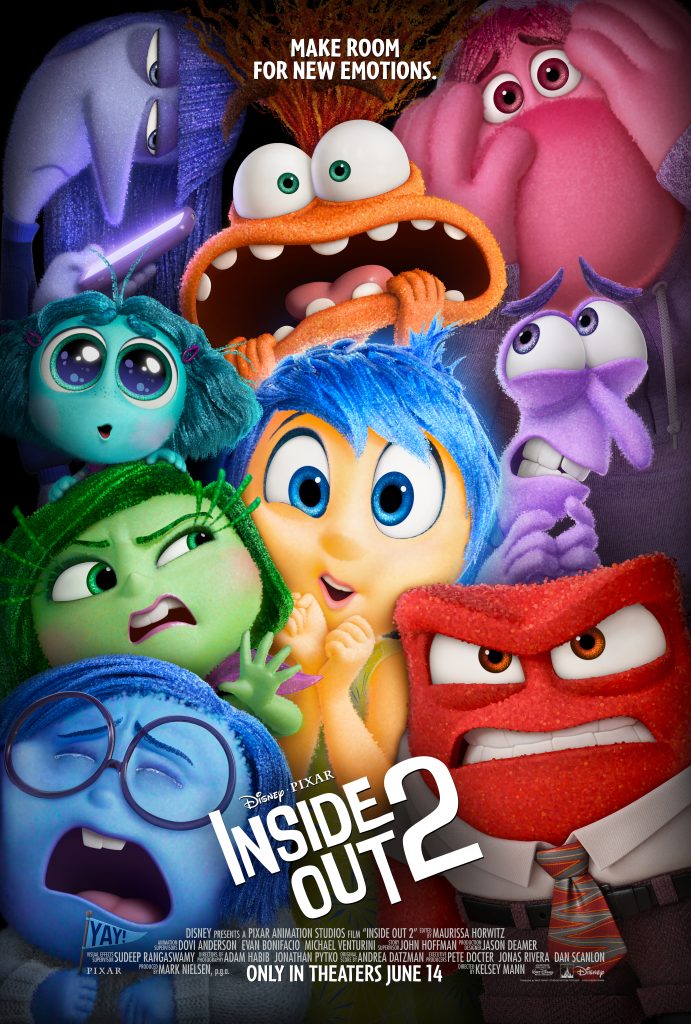Inside Out 2 — which opens in theaters this weekend — takes viewers back into the mind of Riley, now thirteen years old, as she deals with becoming a teenager and a whole new host of emotions.
These new Emotions — Anxiety, Ennui, Embarrassment and Envy — are “a little bit abstract,” compared to Joy and Sadness from the first film, according to Pete Docter, Chief Creative Officer of Pixar and the director of the original film.
So, we spoke with Docter about how he approached the Emotions of the new film, why it needs to be seen in a theater, and how Pixar approaches storytelling.
Why did you want to make Inside Out 2?
Inside Out came out in 2015, and it has continued to be part of the conversation. We hear from people saying, “This movie changed the way I think about parenting,” or “The way I understand my own existence” and like, whoa, that’s pretty heavy for a cartoon — Maybe there’s more to be done with this world? So we tapped Kelsey Mann, who directed Inside Out 2, to think along the lines of the first movie, but in a different direction.
And he came up with this idea of doing something with Anxiety as a character, which, first of all, that really spoke to me as a teenager. But also it was something we were hearing a lot about in the world that anxiety levels, especially among younger people, are going up.
And so it just felt like this is something that could really be relevant. I think it could be funny — which hopefully it is — and also speak to people in the same way that the first one did.
Pixar’s Pete Docter and director Kelsey Mann discuss ‘Inside Out 2’
How do you balance honoring a director’s vision but then also bringing the whole Pixar organization into a film?
It’s confusing to people sometimes to hear Pixar is a director driven studio, but also Pixar is very collaborative, because those seem like they’re at odds with each other and they are to some degree. But there’s no way if you got a hundred people together and said “No rules, just make a movie,” nothing would get done.
The director, as soon as he or she is able, is trying to articulate what they’re after emotionally. And then rely heavily on an amazing team of designers, story artists, writers, technical artists, animators to really bring all of that to life in a way that the audience can feel and connect with.
How did you accomplish that in Inside Out 2?
The thing with Inside Out 2, that was actually more difficult than Inside Out was that we chose the basic emotions for the first film: Anger, Fear, Sadness, Disgust, Joy, things that are pretty basic. Once you say that one word, people are like, “Oh yeah, I know anger.”
But when you give it to like Ennui and Embarrassment and even Anxiety, they’re like “Do I have to have a degree in psychology to understand this movie?” No, the answer’s no. And I think one thing we’ve been really working hard from the first film on is to make sure that we’re visually clear. So even though some of the concepts are big and a little bit abstract, maybe once you see them, you’re like, “Oh yeah, I totally get that.”

Why does Inside Out 2 need to be experienced in theaters?
I think the way to see this movie is in theaters because of that spectacle. The way I look at it is “What’s the purpose of movies? Why do we go watch these flickering images?” I think it’s because we want to feel something right. And the difference between seeing something medium sized with kind of a tinny sound versus going to the theater, it’s just much more immersive. It’s bigger, It’s it makes you feel more.
What are you hoping that younger audiences take away from Inside Out 2?
Most importantly, I hope they’re just entertained, that they have a good time. There’s a lot of funny stuff. There’s slapstick and jokes, but there’s also stuff that’s funny because you go “Oh, I know that I’ve been there, I’ve seen that before,” and those are the best earned jokes.
I think younger audiences, if the first film is any guide, will walk away with some new tools to be able to visualize some of these very abstract ideas. “How do memories work? What is anger? What is joy, and what is the purpose of disgust?” All these things we try to talk about and show in an interesting way.
How does Pixar go about telling stories?
Telling stories is really the root of what Pixar is about. We’re not an animation studio — we say we are, but ultimately we’re a storytelling studio. We are a film making community, and as such we’re really relying on individual people, amazing storytellers to bring forward their own experiences as human beings and then cloak them in some fun way that is just exciting to watch.
You might think our movies are about cars or bugs or monsters, but they’re really about us at the core. They’re about our experiences as human beings that we hope will then resonate with the audience.
